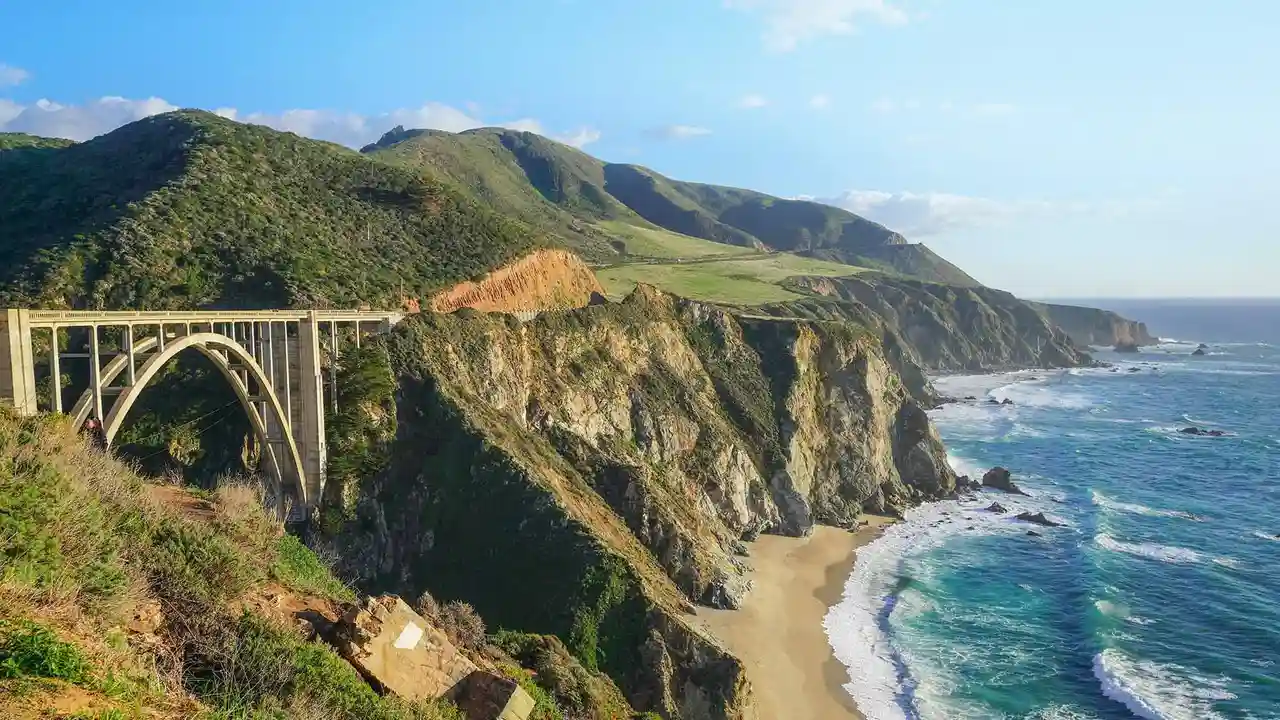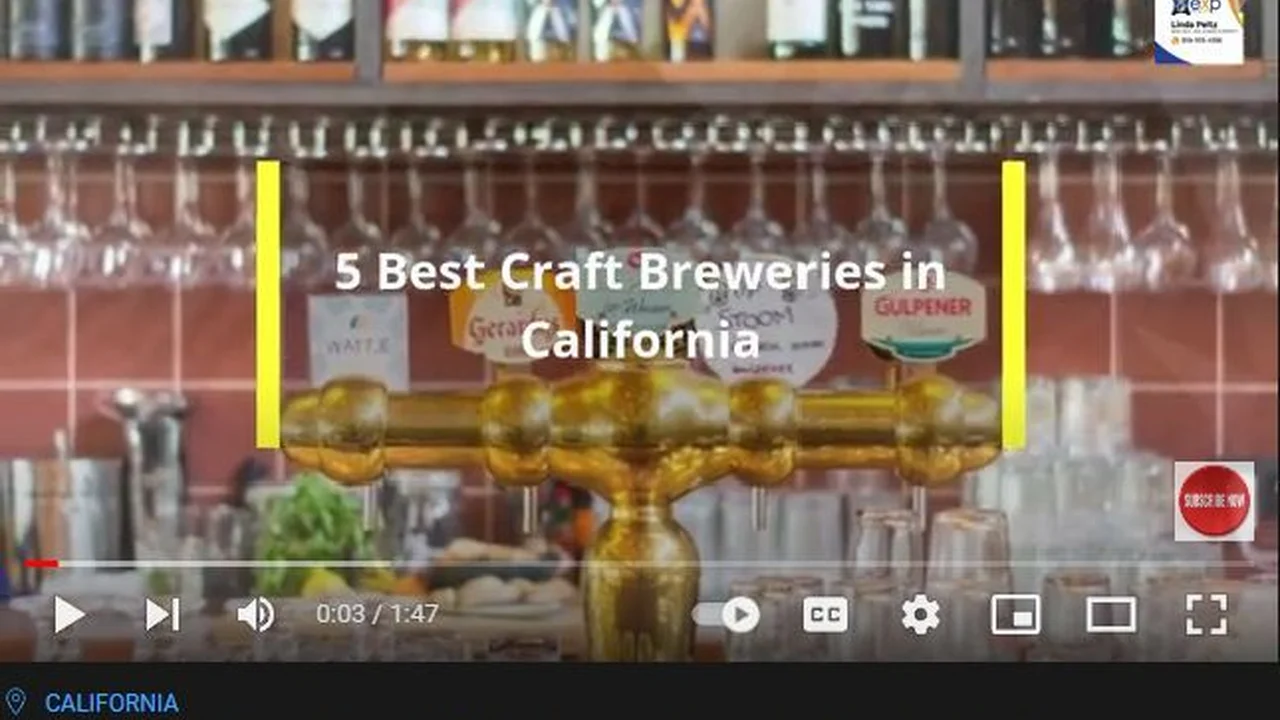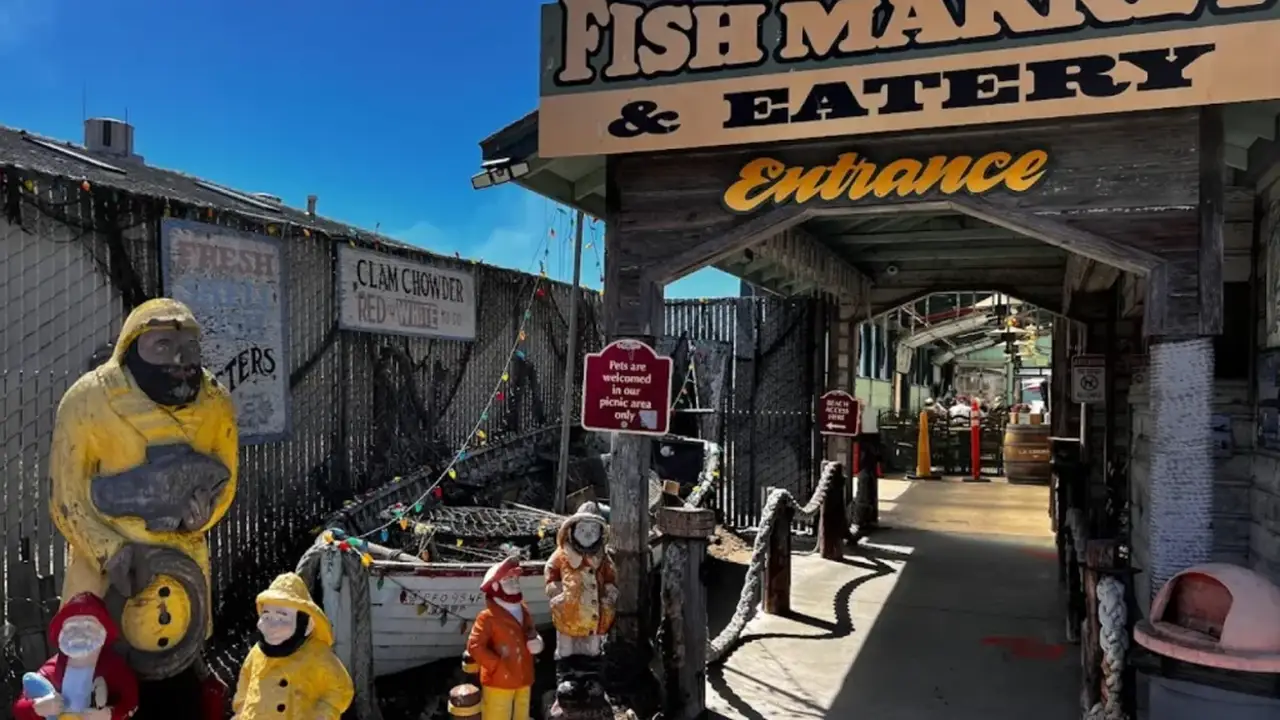5 Best Beaches on the Pacific Coast Highway

Planning a Pacific Coast Highway road trip can be daunting but with the right preparation and information it can be an unforgettable experience. This guide covers everything from the best time to go and must-see stops to essential gear and budgeting tips ensuring your Pacific Coast Highway adventure is smooth and spectacular.
Planning Your Pacific Coast Highway Adventure Essential Tips
So you're dreaming of cruising down the Pacific Coast Highway also known as Highway 1 or the PCH. Picture this sun-kissed beaches dramatic cliffs and the endless expanse of the Pacific Ocean stretching out beside you. Sounds amazing right? But before you hit the road a little planning goes a long way. Let's dive into the essentials to make your PCH road trip a trip of a lifetime.
Best Time to Embark on Your Pacific Coast Highway Journey
Timing is everything. The PCH is beautiful year-round but the best time to visit is generally during the shoulder seasons spring April-May and fall September-October. The weather is mild the crowds are thinner and prices for accommodations and activities are often lower. Summer June-August is peak season meaning more traffic higher prices and potentially foggy conditions along the coast. Winter November-March can bring rain and occasional road closures due to landslides. So plan accordingly.
Choosing Your Route Northbound vs Southbound
Northbound or southbound? That's the question. Most travelers recommend driving southbound from San Francisco to Los Angeles. Why? Because you'll be on the ocean side of the road offering unobstructed views of the coastline. Plus the pull-offs are easier to access when you're heading south. However if you prefer a less crowded experience consider driving northbound. The scenery is just as stunning and you might find yourself with more solitude.
How Many Days to Allocate for Your Pacific Coast Highway Road Trip
How much time do you need? That depends on what you want to see and do. A rushed trip could be done in 3-4 days but to truly savor the experience aim for at least 7-10 days. This allows you to explore the charming towns hike scenic trails and relax on the beaches without feeling rushed. Remember the PCH is about the journey not just the destination.
Must-See Stops Along the Pacific Coast Highway Unforgettable Destinations
The Pacific Coast Highway is brimming with iconic landmarks hidden gems and breathtaking scenery. Here are some must-see stops to include in your itinerary.
San Francisco Golden Gate Bridge and Beyond
Start your journey in San Francisco a city that needs no introduction. Of course the Golden Gate Bridge is a must-see. Walk bike or drive across it for stunning views of the city and the bay. Explore Fisherman's Wharf visit Alcatraz Island and wander through the vibrant neighborhoods of North Beach and Chinatown. Don't forget to take a ride on the iconic cable cars.
Monterey Bay Aquarium A Marine Wonderland
Head south to Monterey and visit the world-renowned Monterey Bay Aquarium. This aquarium showcases the diverse marine life of the Monterey Bay and is a fantastic educational and entertaining experience for all ages. Witness playful sea otters mesmerizing jellyfish and a plethora of other fascinating creatures.
Big Sur Bixby Bridge and Natural Beauty
Big Sur is the heart of the PCH and arguably its most stunning stretch. The iconic Bixby Bridge is a must-photograph landmark. Hike to McWay Falls in Julia Pfeiffer Burns State Park explore Pfeiffer Big Sur State Park and relax on Pfeiffer Beach known for its unique rock formations and keyhole arch. Be prepared for winding roads and limited cell service but the views are worth it.
Hearst Castle A Glimpse into Opulence
Step back in time and visit Hearst Castle in San Simeon. This opulent estate built by William Randolph Hearst is a testament to his extravagant lifestyle. Take a tour of the grand rooms the stunning pools and the sprawling gardens. It's a fascinating glimpse into the Golden Age of Hollywood.
Santa Barbara The American Riviera
Continue south to Santa Barbara often called the American Riviera. Explore State Street visit the Santa Barbara Mission and relax on the beaches. Enjoy the Spanish colonial architecture the vibrant arts scene and the delicious food. Santa Barbara is a perfect place to unwind and soak up the California sunshine.
Los Angeles Hollywood and Urban Adventures
End your journey in Los Angeles a city of endless possibilities. Visit Hollywood walk the Walk of Fame and catch a movie at TCL Chinese Theatre. Explore the beaches of Santa Monica and Venice. Visit the Getty Center for art and architecture or hike to the Hollywood Sign for panoramic views. Los Angeles offers something for everyone.
Essential Gear for Your Pacific Coast Highway Road Trip Stay Prepared
Having the right gear can make or break your road trip. Here's a list of essential items to pack.
Navigation Tools GPS Apps and Offline Maps
While cell service can be spotty along the PCH it's important to have reliable navigation tools. A GPS device is a good option but smartphone apps like Google Maps or Waze can also be helpful. Download offline maps before you go in case you lose cell service. A traditional paper map can also be a lifesaver.
Comfortable Clothing Layers for Varying Weather
The weather along the PCH can be unpredictable. Pack comfortable clothing that can be layered. A light jacket a fleece sweater and a waterproof shell are essential. Bring comfortable walking shoes hiking boots and sandals. Don't forget a hat sunglasses and sunscreen.
Camera Equipment Capturing the Scenery
You'll want to capture the stunning scenery along the PCH. Bring a camera whether it's a smartphone a DSLR or a GoPro. Pack extra batteries or a portable charger. A tripod can be helpful for taking steady photos especially at night. Consider bringing a drone for aerial views of the coastline.
Car Essentials Emergency Kit and Maintenance Tools
Make sure your car is in good working order before you go. Get a tune-up check the tires and fluids and make sure the brakes are working properly. Pack an emergency kit with jumper cables a flashlight a first-aid kit and a tire repair kit. A portable air compressor can also be helpful. Consider purchasing a roadside assistance plan for added peace of mind.
Snacks and Drinks Staying Hydrated and Energized
Pack plenty of snacks and drinks to stay hydrated and energized on the road. Water is essential. Bring healthy snacks like granola bars fruit nuts and trail mix. A cooler can be helpful for keeping drinks and snacks cold. Avoid sugary drinks and processed foods which can lead to energy crashes.
Budgeting for Your Pacific Coast Highway Road Trip Financial Planning
A PCH road trip can be expensive but with careful planning you can stick to your budget. Here's a breakdown of the costs to consider.
Accommodation Options Hotels Motels and Camping
Accommodation is a major expense. Hotels and motels can range from budget-friendly to luxurious. Consider camping to save money. There are numerous campgrounds along the PCH but reservations are often required especially during peak season. Airbnb can also be a good option for finding unique and affordable accommodations.
Gas Prices Fuel Efficiency and Route Planning
Gas prices in California are typically higher than the national average. Factor this into your budget. Choose a fuel-efficient vehicle. Plan your route carefully to minimize unnecessary driving. Consider using a gas price app to find the cheapest gas stations along the way.
Food Costs Restaurants Groceries and Picnic Options
Eating out can be expensive. Consider packing your own meals and snacks to save money. Visit grocery stores to stock up on supplies. Have picnics at scenic viewpoints. When you do eat out choose budget-friendly restaurants or cafes. Look for happy hour deals and early bird specials.
Activities Entrance Fees and Entertainment
Activities can add up quickly. Consider purchasing a national park pass if you plan to visit multiple parks. Look for free activities like hiking and beachcombing. Check for discounts on attractions. Plan your activities in advance to avoid impulse purchases.
Miscellaneous Expenses Parking Tolls and Souvenirs
Don't forget to factor in miscellaneous expenses like parking tolls and souvenirs. Parking can be expensive in cities like San Francisco and Los Angeles. Toll roads are relatively rare along the PCH but be aware of them. Set a budget for souvenirs and stick to it.
Product Recommendations Enhancing Your Pacific Coast Highway Experience
Here are some specific product recommendations that can enhance your Pacific Coast Highway road trip. These recommendations are based on personal experience and thorough research.
Garmin DriveSmart 65 GPS Navigator Reliable Navigation
Product Recommendation: Garmin DriveSmart 65 GPS Navigator
Use Case: Navigating the Pacific Coast Highway especially in areas with limited cell service.
Product Comparison: Compared to smartphone navigation apps the Garmin DriveSmart 65 offers reliable offline maps clear turn-by-turn directions and advanced features like voice control and driver alerts. While smartphone apps can be convenient they rely on cell service which can be unreliable along the PCH. Dedicated GPS devices like the Garmin are more dependable.
Detailed Information: The Garmin DriveSmart 65 features a large 6.95-inch display preloaded maps of North America and voice-activated navigation. It also includes driver alerts for sharp curves speed changes and school zones. The device is easy to use and provides accurate directions even in remote areas. It also offers TripAdvisor traveler ratings for hotels restaurants and attractions.
Pricing: Approximately $200 - $250 depending on the retailer.
REI Co-op Sahara Shade Hoodie Sun Protection and Comfort
Product Recommendation: REI Co-op Sahara Shade Hoodie
Use Case: Protecting yourself from the sun while hiking and exploring along the Pacific Coast Highway.
Product Comparison: Compared to regular cotton shirts the REI Co-op Sahara Shade Hoodie offers UPF 50+ sun protection is lightweight and breathable and wicks away moisture. While sunscreen is essential clothing that provides sun protection is also important especially for long days outdoors. This hoodie is more comfortable and protective than wearing sunscreen alone.
Detailed Information: The REI Co-op Sahara Shade Hoodie is made from a lightweight and breathable polyester fabric that provides UPF 50+ sun protection. It features a hood that provides additional coverage and long sleeves with thumb loops. The hoodie is comfortable to wear in warm weather and packs easily into a backpack. It's available in a variety of colors and sizes.
Pricing: Approximately $50 - $60 depending on the color and size.
Anker PowerCore 20100 Portable Charger Keeping Devices Powered
Product Recommendation: Anker PowerCore 20100 Portable Charger
Use Case: Keeping your smartphone camera and other devices powered up while on the road.
Product Comparison: Compared to other portable chargers the Anker PowerCore 20100 offers a high capacity fast charging speeds and a compact design. While some portable chargers are bulky and slow the Anker PowerCore 20100 is lightweight and can charge a smartphone multiple times. It's a reliable and convenient way to keep your devices powered up when you don't have access to an outlet.
Detailed Information: The Anker PowerCore 20100 features a 20100mAh capacity which can charge a smartphone up to seven times. It uses PowerIQ and VoltageBoost technologies to deliver fast charging speeds. The charger is compact and lightweight making it easy to carry in a backpack or purse. It also includes a Micro USB cable for charging the power bank.
Pricing: Approximately $40 - $50 depending on the retailer.
Coleman Sundome 2-Person Tent Affordable Camping Option
Product Recommendation: Coleman Sundome 2-Person Tent
Use Case: Providing a comfortable and affordable shelter for camping along the Pacific Coast Highway.
Product Comparison: Compared to more expensive tents the Coleman Sundome 2-Person Tent is a budget-friendly option that is easy to set up and provides adequate protection from the elements. While it may not be as durable or feature-rich as higher-end tents it's a good choice for casual campers who are looking for a simple and affordable shelter.
Detailed Information: The Coleman Sundome 2-Person Tent features a dome design that is easy to set up. It includes a rainfly for added protection from the rain and a ventilation system to reduce condensation. The tent is made from durable polyester fabric and has a floor size of 7 x 5 feet. It's a good choice for solo travelers or couples who are looking for a basic camping tent.
Pricing: Approximately $50 - $60 depending on the retailer.
National Geographic Road Atlas Adventure Edition Navigation Backup
Product Recommendation: National Geographic Road Atlas Adventure Edition
Use Case: Providing a reliable backup navigation tool in case of GPS failure or limited cell service.
Product Comparison: Compared to relying solely on digital navigation tools the National Geographic Road Atlas Adventure Edition offers a comprehensive and detailed view of the Pacific Coast Highway and surrounding areas. While digital maps can be convenient they are vulnerable to technical issues and limited cell service. A paper atlas provides a reliable and easily accessible backup.
Detailed Information: The National Geographic Road Atlas Adventure Edition features detailed maps of the United States Canada and Mexico. It includes information on national parks state parks campgrounds and other points of interest. The atlas is printed on durable paper and is designed to withstand the rigors of travel. It's a valuable tool for planning and navigating your Pacific Coast Highway road trip.
Pricing: Approximately $20 - $25 depending on the retailer.
Safety Tips for Your Pacific Coast Highway Road Trip Stay Safe
Safety should be your top priority on your PCH road trip. Here are some tips to help you stay safe.
Driving Safely on Winding Roads Stay Alert
The PCH is known for its winding roads. Drive slowly and cautiously. Stay alert and avoid distractions. Be aware of your surroundings and watch out for cyclists and pedestrians. Use your headlights even during the day. Pull over to let faster traffic pass.
Wildlife Encounters Observe from a Distance
You may encounter wildlife along the PCH. Observe animals from a safe distance. Do not feed them or approach them. Be especially cautious around bears mountain lions and other potentially dangerous animals. Store food properly to avoid attracting wildlife to your campsite.
Road Closures and Weather Conditions Check Before You Go
Road closures can occur due to landslides wildfires or other events. Check the California Department of Transportation Caltrans website for current road conditions before you go. Be aware of the weather forecast and be prepared for changing conditions. Avoid driving during heavy rain or fog.
Emergency Preparedness First Aid Kit and Communication
Pack a well-stocked first-aid kit. Know how to use it. Have a plan for communicating in case of an emergency. Carry a cell phone but be aware that cell service can be spotty in some areas. Consider purchasing a satellite phone or a personal locator beacon PLB for emergencies.
Personal Safety Secure Your Belongings
Be aware of your surroundings and take precautions to protect yourself from crime. Secure your belongings. Do not leave valuables in your car. Be especially cautious in crowded areas. Trust your instincts and avoid situations that feel unsafe.
Pacific Coast Highway Photography Tips Capturing the Perfect Shot
The PCH is a photographer's paradise. Here are some tips to help you capture the perfect shot.
Golden Hour Lighting Best Time for Photography
The golden hour the hour after sunrise and the hour before sunset is the best time for photography. The light is soft warm and flattering. Plan your shoots around the golden hour for the best results.
Composition Techniques Rule of Thirds and Leading Lines
Use composition techniques to create visually appealing photos. The rule of thirds involves dividing your frame into nine equal parts and placing your subject along the lines or at the intersections. Leading lines can be used to draw the viewer's eye into the scene.
Landscapes Seascapes and Coastal Views Finding the Right Angle
Experiment with different angles to find the most compelling perspective. Shoot from a low angle to emphasize the foreground or from a high angle to show the vastness of the landscape. Pay attention to the light and shadows. Use a wide-angle lens to capture the entire scene.
Wildlife Photography Patience and Respect
Wildlife photography requires patience and respect. Be prepared to wait for the perfect moment. Use a telephoto lens to get close-up shots without disturbing the animals. Respect their space and do not approach them too closely.
Post-Processing Editing Software and Techniques
Post-processing can enhance your photos. Use editing software like Adobe Lightroom or Photoshop to adjust the exposure contrast and colors. Crop your photos to improve the composition. Be careful not to over-edit your photos. The goal is to enhance the natural beauty of the scene.
Sustainable Travel on the Pacific Coast Highway Responsible Tourism
Be a responsible traveler and minimize your impact on the environment.
Reducing Your Carbon Footprint Transportation Choices
Choose fuel-efficient transportation options. Consider renting a hybrid or electric vehicle. Carpool with other travelers. Use public transportation when available. Walk or bike whenever possible.
Supporting Local Businesses and Communities Economic Impact
Support local businesses and communities. Eat at local restaurants shop at local stores and stay at locally owned accommodations. This helps to boost the local economy and preserve the unique character of the region.
Conserving Water and Energy Resource Management
Conserve water and energy. Take shorter showers turn off the lights when you leave your hotel room and avoid wasting water. Choose accommodations that are committed to sustainability.
Respecting Nature and Wildlife Leave No Trace Principles
Respect nature and wildlife. Leave no trace of your visit. Pack out all of your trash stay on designated trails and avoid disturbing plants and animals. Follow Leave No Trace principles.
Avoiding Single-Use Plastics Reducing Waste
Avoid single-use plastics. Bring your own reusable water bottle coffee cup and shopping bags. Refuse plastic straws and utensils. Choose products that are packaged in sustainable materials.
:max_bytes(150000):strip_icc()/277019-baked-pork-chops-with-cream-of-mushroom-soup-DDMFS-beauty-4x3-BG-7505-5762b731cf30447d9cbbbbbf387beafa.jpg)






